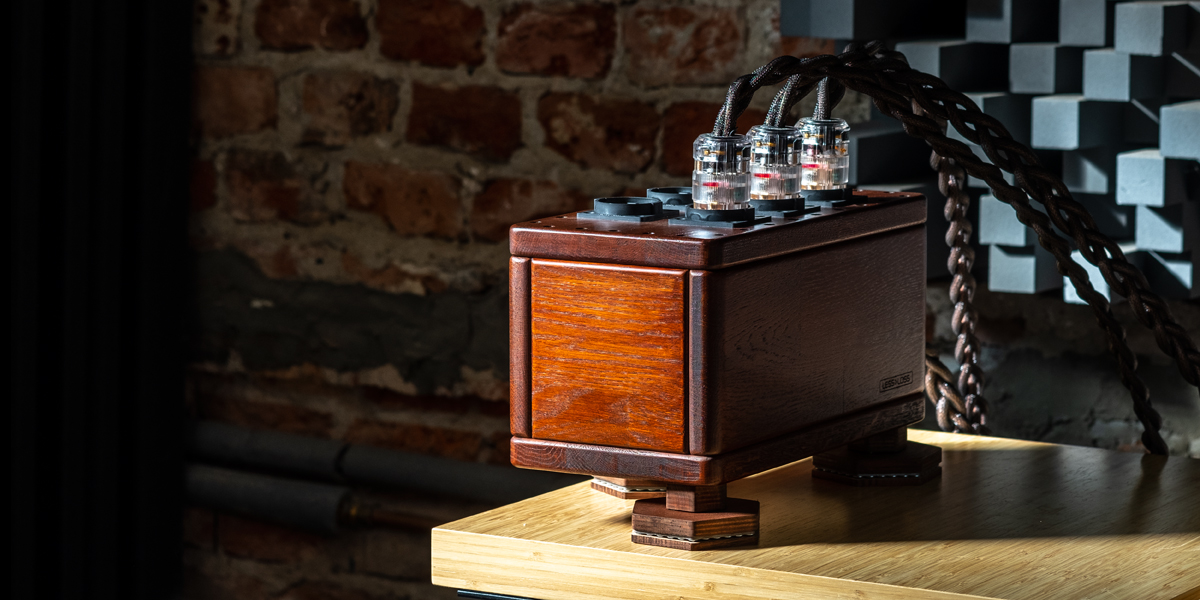The LessLoss Power Distributor which features the Lithuanian company’s signature noise-rejection claims to promise clean power feed to connected audio components. Let’s find out whether this minimalist passive effort is any good. Enjoy!
Silence in the woods
To set the stage for this review I have a story to share. A while ago a reader asked me about a new interconnect set he could try between his CD player and amp. Although that seemed a fairly straightforward simple question, the answer wasn’t. Truth be told, they rarely are. Since I wasn’t asked about my personal bests and hardware I haven’t even auditioned, the odds of actually helping out in a meaningful way were reasonably high, so I replied back with several questions of my own. I was primarily interested in learning why the man’s current ICs had to go and what incentivized him to change that particular item in the first place. In his reply he briefly described his setup and general direction where he’d like to steer its profile, which gave me some ideas how to move forward. In short, pushing that system’s flavor towards extra tonal density without changing its main components and spending too much was the ultimate goal. In that message my correspondent saw RCAs as the best way of reaching it and superior over power products. That confession instantly changed my mission’s profile to purely educational. I would’ve remained silent if that reader’s rig already had its power front sorted well enough to seek upgrades elsewhere, but this obviously wasn’t the case. As our conversation continued, I encountered the usual mantra about “kilometers of crappy cables between our households and electric infrastructure.” That’s enough for many naysayers to see all fancy cords and distributors between wall outlets and their setups as silly expenses. Here I explained that we can’t change a city’s electric grid, but we can limit incoming noise from it that eventually seeps into our audio hardware to bottleneck its performance. Boutique power cables and distributors aren’t a means to fix the mains problem, but to decrease its severity. If they’re effective enough, we get audibly better sound. Digital products benefit from such solutions more because whatever signals they generate using said power quality gets incorporated and later on amplified by other devices. After all, preamps, amps and speakers work on what they get from sources and transports. That explains why trimming noise as early as possible often results in the most noticeable sonic performance hikes.
I would’ve remained silent if that reader’s rig already had its power front sorted well enough to seek upgrades elsewhere, but this obviously wasn’t the case. As our conversation continued, I encountered the usual mantra about “kilometers of crappy cables between our households and electric infrastructure.” That’s enough for many naysayers to see all fancy cords and distributors between wall outlets and their setups as silly expenses. Here I explained that we can’t change a city’s electric grid, but we can limit incoming noise from it that eventually seeps into our audio hardware to bottleneck its performance. Boutique power cables and distributors aren’t a means to fix the mains problem, but to decrease its severity. If they’re effective enough, we get audibly better sound. Digital products benefit from such solutions more because whatever signals they generate using said power quality gets incorporated and later on amplified by other devices. After all, preamps, amps and speakers work on what they get from sources and transports. That explains why trimming noise as early as possible often results in the most noticeable sonic performance hikes.
They say that curiosity killed the cat. As an inquisitive type still among the living I simply had to ask whether my reader actually had any experience with power products. By now his answer should be obvious to you, so here’s what I did at that point. I suggested one RCA cable that had a high chance of getting the job done for him, but I also encouraged the man to spend similar coin on one specific power cable that should do substantially more with his digital source. The decision was all his and I’ll spare you the rather lengthy reply I got from him several weeks later. It’s irrelevant here. What matters is the fact that to logically structure and explain the subject of power to that individual, well, someone else had to first educate me. Louis Motek of LessLoss is the one who did so.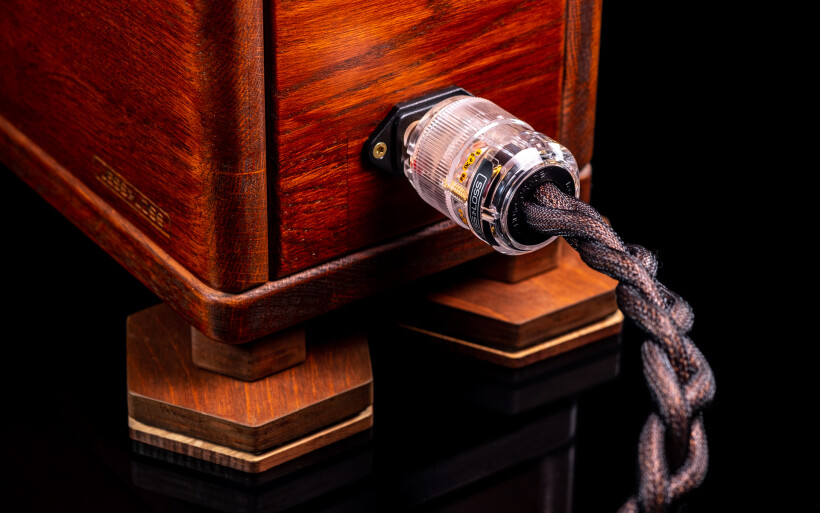 Since October 2018 I’ve sampled nine LessLoss components and most were generously infused with the company’s highly effective in-house developed noise-suppressing tech; C-Marc wiring and Firewall signal conditioners. After publishing my findings about several his power cords and accessories I asked Louis whether he had in his pipeline an outlet distributor box to complement these products. I was told that he already had custom made several such items for some of his customers’ specific needs. This labor-intense affair built on a one-off basis had to be kept under wraps then, but the plan to make it standardized and ready for a broader audience was already in the works. Two months ago Srajan already had a go at the finalized LessLoss Power Distributor and now it’s my turn.
Since October 2018 I’ve sampled nine LessLoss components and most were generously infused with the company’s highly effective in-house developed noise-suppressing tech; C-Marc wiring and Firewall signal conditioners. After publishing my findings about several his power cords and accessories I asked Louis whether he had in his pipeline an outlet distributor box to complement these products. I was told that he already had custom made several such items for some of his customers’ specific needs. This labor-intense affair built on a one-off basis had to be kept under wraps then, but the plan to make it standardized and ready for a broader audience was already in the works. Two months ago Srajan already had a go at the finalized LessLoss Power Distributor and now it’s my turn.
A cardboard box featured multiple cardboard layers that formed thick internal walls to protect the key ingredient wrapped in stretch foil from all sides. Considering its type there was no need for any extras or manual. This passive power distributor essentially multiplies a single wall outlet into six, just as a $5 white “juice bar” from a mainstream electronics store would, so it’s a self-explanatory item. This is where their similarities end, however. The LessLoss is a purist design with sonic performance set as the top priority, while all its internal and external parts contribute directly to make it so. This approach means freedom from any non-essentials such as LEDs, switches, DC blockers, fuses, MOVs, voltage meters, transformers, caps, coils, etc. It’s all about clean power distribution achieved via advanced noise rejection, low resistance and unobstructed current flow.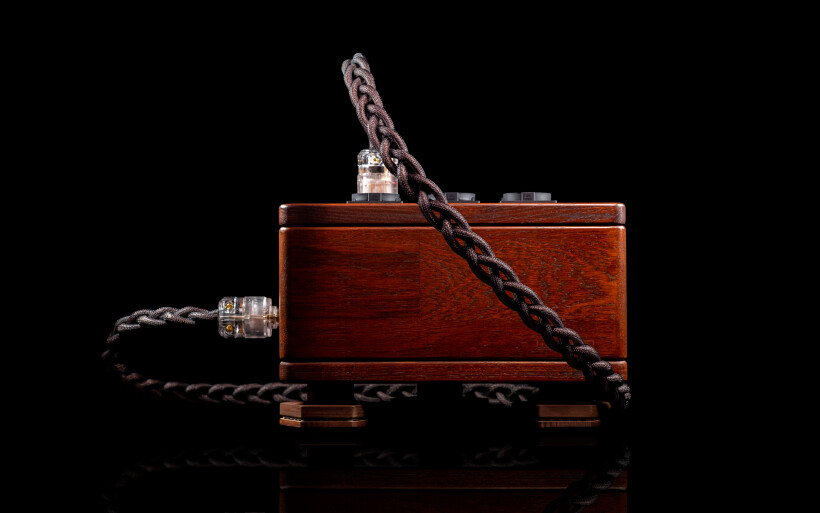 Just to be clear, the LessLoss doesn’t protect components connected to it from i.e. surge spikes. That task is for fuses built into most electronic devices and our households’ circuit breakers. If you think that in-between these two lines of defense you’re safer with yet another one, this Lithuanian solution isn’t the one. Louis also explained that if a DC blocker is needed, it should be installed as far away from an audio setup as possible and ideally somewhere close to the main circuit breaker. If that’s not possible, only a product with its oversaturated transformer should get one. iFi audio’s tiny affordable DC Blocker is my way of getting rid of that issue, while GigaWatt’s twin thermionic breaker installed on the power line solely for audio duties oversees safety in my listening room.
Just to be clear, the LessLoss doesn’t protect components connected to it from i.e. surge spikes. That task is for fuses built into most electronic devices and our households’ circuit breakers. If you think that in-between these two lines of defense you’re safer with yet another one, this Lithuanian solution isn’t the one. Louis also explained that if a DC blocker is needed, it should be installed as far away from an audio setup as possible and ideally somewhere close to the main circuit breaker. If that’s not possible, only a product with its oversaturated transformer should get one. iFi audio’s tiny affordable DC Blocker is my way of getting rid of that issue, while GigaWatt’s twin thermionic breaker installed on the power line solely for audio duties oversees safety in my listening room.
The LessLoss Power Distributor measures (W x H x L) 16 x 16 x 31cm and weighs about 2kg, so is reasonably light yet wide enough to firmly sit on a flat surface. Its manually sanded, then polished, enclosure comprises six solid wood panels bolted together. LessLoss’ non-magnetic material of choice keeps unwanted resonances at bay and looks pleasing to the eye. My loaner’s top houses 6x Furutech FI-E30 Schuko outlets with gold-plated nickel-free contacts with marked live contacts plus one IEC inlet on the side. Srajan’s alternate sample meant for US/Japan markets had its upper deck busy with as many sockets grouped into three sections with Panzerholz frames and carbon fiber plates. If you’re wondering how was I able to take photos of both versions, Srajan’s loaner unit was routed my way by accident. Upon learning about that small snafu, Louis instantly sent another one fit for my Schuko type cables. Professionals don’t ask questions or wonder for days what to do. They act.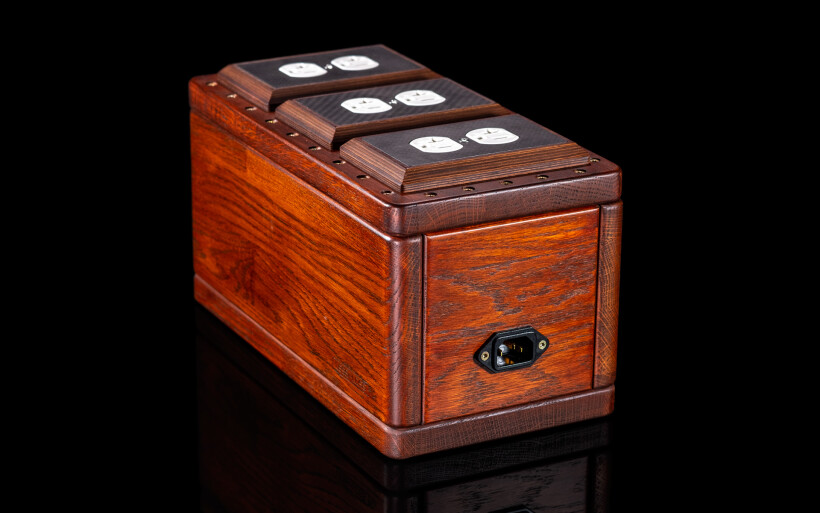 This report’s product can be had in any color of your choice, as long as it’s the same semi-matte solid wood shown on the photos. It feels handmade yet luxurious and is very nicely put together. I wouldn’t mind an extra top on my unit to cover its numerous bolt heads and leave only the outlets exposed, but that’s just my preference. Considering this distributor’s construction I was advised to not open it up so I didn’t. Its two critical internal ingredients aren’t a mystery, however. The main signal conditioning block incorporates twin in-line Firewall modules on each leg, including ground, while 32 short cuts of 4.6mm2 Entropic-processed C-Marc hookup wiring connect i/o with it. All contact points are potted in resin to reduce mechanical micro-vibrations and banish more noise in the process. Although the LessLoss Power Distributor works as intended without any decoupler footers underneath, Louis suggested three Bindbreakers ($224/ea.) and I agreed. These hexagonal pucks made of hard oak wood, ply and steel are directional resonance sinks designed to absorb and dissipate input vibrations without reflecting them back.
This report’s product can be had in any color of your choice, as long as it’s the same semi-matte solid wood shown on the photos. It feels handmade yet luxurious and is very nicely put together. I wouldn’t mind an extra top on my unit to cover its numerous bolt heads and leave only the outlets exposed, but that’s just my preference. Considering this distributor’s construction I was advised to not open it up so I didn’t. Its two critical internal ingredients aren’t a mystery, however. The main signal conditioning block incorporates twin in-line Firewall modules on each leg, including ground, while 32 short cuts of 4.6mm2 Entropic-processed C-Marc hookup wiring connect i/o with it. All contact points are potted in resin to reduce mechanical micro-vibrations and banish more noise in the process. Although the LessLoss Power Distributor works as intended without any decoupler footers underneath, Louis suggested three Bindbreakers ($224/ea.) and I agreed. These hexagonal pucks made of hard oak wood, ply and steel are directional resonance sinks designed to absorb and dissipate input vibrations without reflecting them back.
Prior to the LessLoss’ arrival I had to take several things into account; a suitable sparring partner for it, bits of my setup to use and also additional power cords above those I already had. Since many Boenicke Audio products are heavily infused with LessLoss tech, my stories about the former company don’t feature comparisons to the latter’s counterparts and vice versa. The way I see it, putting LessLoss signal conditioning methods against their upscaled versions under Boenicke’s banner doesn’t seem fair, especially considering that Louis and Sven have been very transparent about their collaboration. This time around however I made an exception, and I believe it was justified.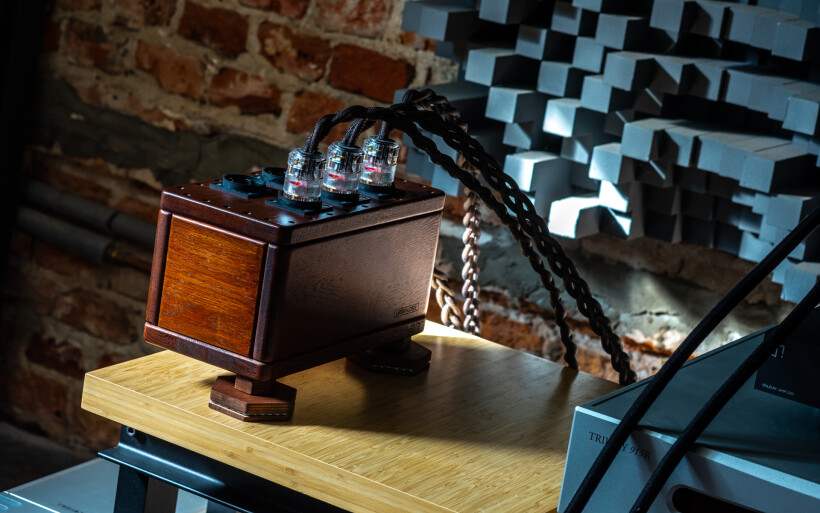 Although the same core purpose, passive topology and internals (multiple Firewall modules and C-Marc wiring) make Boenicke Audio Power Gate and today’s LessLoss conceptually similar products, they’re not identical. The former embeds its maker’s signature tweaks and dismisses mechanical connections in favor of four captive M2 cords, so it’s meant for radicals who in pursuit of performance are willing to sacrifice some convenience. The LessLoss on the other hand features regular socketry that makes it easier to use, while its wider frame is more stable on a shelf or floor and is free from Sven’s internal accessory pack. With that in mind, I was interested in learning whether the listed differences between these two very similar contestants were enough to impact their sonics in any meaningful way or not.
Although the same core purpose, passive topology and internals (multiple Firewall modules and C-Marc wiring) make Boenicke Audio Power Gate and today’s LessLoss conceptually similar products, they’re not identical. The former embeds its maker’s signature tweaks and dismisses mechanical connections in favor of four captive M2 cords, so it’s meant for radicals who in pursuit of performance are willing to sacrifice some convenience. The LessLoss on the other hand features regular socketry that makes it easier to use, while its wider frame is more stable on a shelf or floor and is free from Sven’s internal accessory pack. With that in mind, I was interested in learning whether the listed differences between these two very similar contestants were enough to impact their sonics in any meaningful way or not.
To limit hardware rotations and downtime, my platform comprised only essentials; Innuos Statement streamer, LampizatOr Pacific DAC and Enleum AMP-23R integrated deck. Boenicke Power Gate’s three M2 cords powered these on their own, while as many standalone 1.5m C-Marc power cords (two regulars and one Entropic-processed) connected to the Lithuanian distributor positioned on top of three Bindbreaker footers. To level the battlefield I asked Louis for one more Entropic-processed C-Marc power cord and he happily obliged. That way each distributor product with four cables allowed me to power my entire platform separately. After each listen I had to manually turn off all involved components, swap power cords, turn everything back on, wait for several minutes and have a listen again. Although this was a bit of a hassle, later on these changes were made only once per day. After introductory comparisons there was no need to swap them more often. And lastly, both contestants connected to the same duplex wall outlet, while my amp of choice made sound|kaos monitors as the ideal load for this assignment.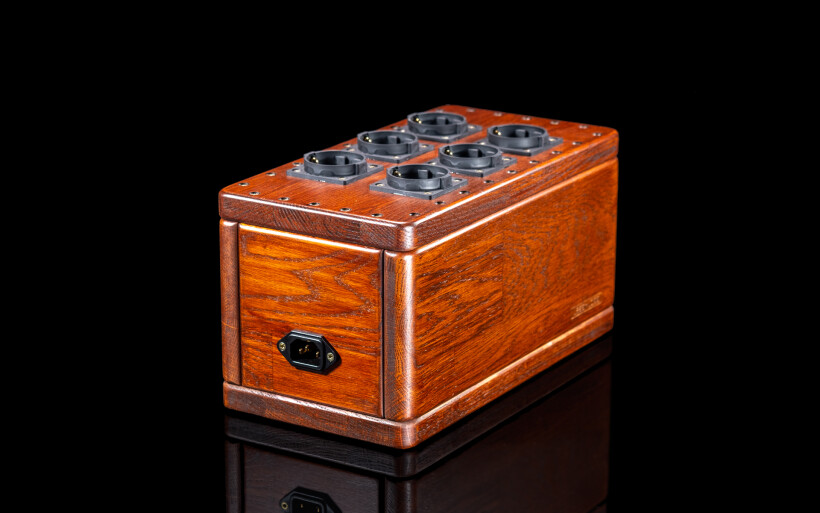 Let me start with the following quote from my Boenicke Audio Power Gate review: “Although it was less warm than the GigaWatt PC-3 SE EVO+, it sounded quicker, spatially more expansive, tangible and texturally more organic, yet was as sensual and soft on demand. It injected extra glare, decay and weight into highs, while its greater elasticity and crackling bass netted stiffer more contoured overall feel, further boosted by higher pigment provision. The Swiss was as relaxed and soothing as its opponent, however. Its aural projections rendered a touch closer to my ears and outlined finer were somewhat cooler yet more alive, pronounced and moisturized. All air around them had this particularly pleasant humidity to it the GigaWatt didn’t have as much. The Power Gate was noticeably sunnier and came on top on backdrop cleanliness that was its distinctively posh core, while its efficacy in extracting and magnifying dust particles suspended in air was also higher in the process.”
Let me start with the following quote from my Boenicke Audio Power Gate review: “Although it was less warm than the GigaWatt PC-3 SE EVO+, it sounded quicker, spatially more expansive, tangible and texturally more organic, yet was as sensual and soft on demand. It injected extra glare, decay and weight into highs, while its greater elasticity and crackling bass netted stiffer more contoured overall feel, further boosted by higher pigment provision. The Swiss was as relaxed and soothing as its opponent, however. Its aural projections rendered a touch closer to my ears and outlined finer were somewhat cooler yet more alive, pronounced and moisturized. All air around them had this particularly pleasant humidity to it the GigaWatt didn’t have as much. The Power Gate was noticeably sunnier and came on top on backdrop cleanliness that was its distinctively posh core, while its efficacy in extracting and magnifying dust particles suspended in air was also higher in the process.”
Here’s where it got really interesting: “The way how the Boenicke bar moved air in my room was one of the most important changes that resulted in dynamically more capable spatially grander sound after each back and forth. The GigaWatt did a spot on job on accurate renders of instruments and vocals, while the Swiss still had them more physical, articulated, wilder and bolder on feisty recordings, just to become utmost sensual and intimate one track later. The latter’s greater versatility and ease in differentiating music genres turned it into a higher-tiered more refined product all in all. The PC-3 SE EVO+ did a lot on its own as per usual, but multiple clashes with the Power Gate left no room for guessing which of the two was the more potent superior performer […]. On foundational silencing work and expected behavior both were very similar just as they should. Nonetheless, it was also clear which one pushed my setup’s performance higher up to emerge as the more effective at its key task. To secure that win the Power Gate had to trim more grit without taking anything in return. It had sensibly blacker backdrop and sounded physical, organic, open, alive, clear and meticulous versus the rounder, warmer, more distant, slower and monolithic GigaWatt.”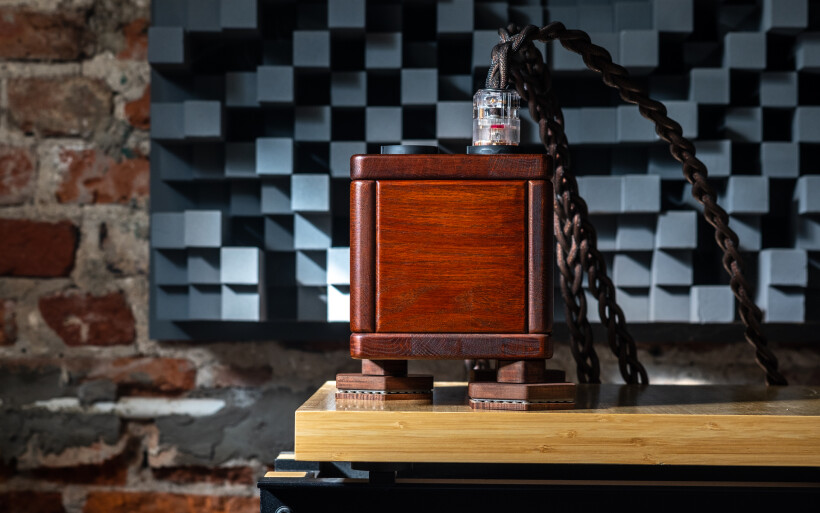 These two paragraphs are essential for this story. To learn how the LessLoss goes about its business, simply replace Boenicke’s distributor with it there and presto. Although I still like my GigaWatt, both wooden champs made short work of it in a profoundly audible, highly meaningful and pretty much the same fashion. That’s the key takeaway. In this context the LessLoss stands tall as yet another specimen that reinforces my take on its passive minimalist approach that I see as superior over conditioners, period. Then again, I wasn’t the first one with such observations. I’m merely catching up. Most credible top shelf reviewers – here I mean individuals exposed to far more power components than I – rely solely on means such as today’s effort to power their setups. I think that there’s no coincidence in that.
These two paragraphs are essential for this story. To learn how the LessLoss goes about its business, simply replace Boenicke’s distributor with it there and presto. Although I still like my GigaWatt, both wooden champs made short work of it in a profoundly audible, highly meaningful and pretty much the same fashion. That’s the key takeaway. In this context the LessLoss stands tall as yet another specimen that reinforces my take on its passive minimalist approach that I see as superior over conditioners, period. Then again, I wasn’t the first one with such observations. I’m merely catching up. Most credible top shelf reviewers – here I mean individuals exposed to far more power components than I – rely solely on means such as today’s effort to power their setups. I think that there’s no coincidence in that.
Upon comparing the LessLoss to the Boenicke Power Gate most listeners would see them as identical performers. That’s hardly a surprise given the core means both these products share. To be honest, if they weren’t alike I would’ve been a touch puzzled as an enthusiast already well-accustomed to LessLoss Firewall modules and C-Marc cables both as standalone affairs and applied in various other products. Considering all this, on its own the LessLoss distributor behaved in a predictable manner. Its gearing for extensive noise rejection translated into deep background blackness upon which instrumental moisture, resolution and sensation of the aural space itself blossomed. Listeners not particularly familiar with such action will find it a bit eerie at first, simply because i.e. speakers, DACs and amps voiced to sound thick, syrupy and round can’t be well-illuminated resolved spacious types on top of that. Although usually the balance slides between these two opposite trait groups, highly effective power components are subject to different laws that allow for blending them. Their darkish overall aesthetic as the result of potent noise trimming not only removes excess fuzz, bloom, grain and veil, but it also accelerates their sonic MO and makes them more open, vigorous and alive. In other words, products such as the LessLoss distributor know how to sound juicy, texturally generous, propulsive, informational and spatially unrestricted at the same time. That makes them as special and desirable as they are extremely universal.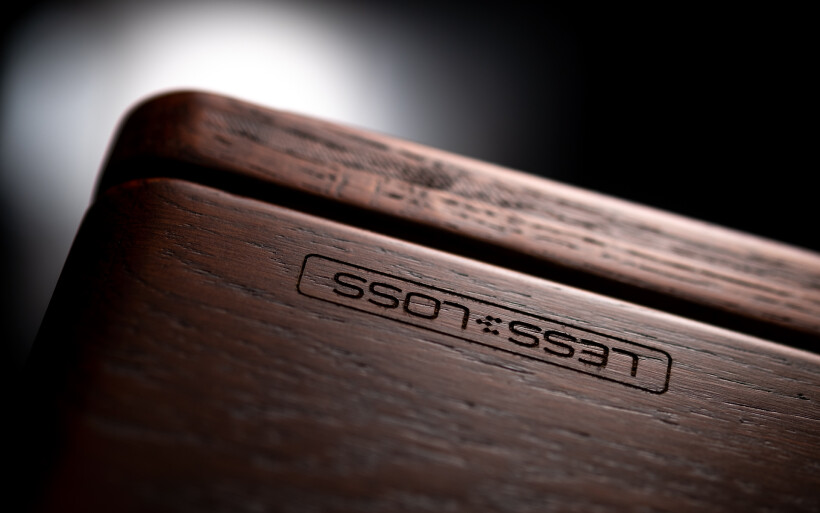 There’s no question that the LessLoss’ inherently fetching dark round bloomy anchored sound makes a nice first focal point to stop at and appreciate. Once that early sensation settles in however, the product introduces itself as a resolution fiend capable of casting enormously large landscapes busy with easily served details and pinpoint accurate finely outlined sound sources. The Lithuanian’s ability to behave this velvety, smooth, atmospheric, aurally gifted, elastic and keen on extracting tiniest dust particles is highly admirable in my book. Performance of this rare all-encompassing list comes as superbly balanced and free from any obvious trade-offs. As such the LessLoss won’t steer a setup’s general gestalt in any particular direction. Instead it’ll gladly and gracefully elevate what’s already there. Speaking metaphors, it won’t carry out plastic surgery on a system to radically turn its voice into something else. Rather, it’s an expert makeup artist with the skill set required to emphasize a system’s very best assets. Above all else however, the LessLoss renders music as substantially more flowing and digestible than before, which I see as its primary attractor and most critical task. This highly universal and accomplished product will audibly improve every setup I can imagine no matter its core flavor. I also think that it has what it takes to hold its ground even against similar opponents higher up in the pricing hierarchy.
There’s no question that the LessLoss’ inherently fetching dark round bloomy anchored sound makes a nice first focal point to stop at and appreciate. Once that early sensation settles in however, the product introduces itself as a resolution fiend capable of casting enormously large landscapes busy with easily served details and pinpoint accurate finely outlined sound sources. The Lithuanian’s ability to behave this velvety, smooth, atmospheric, aurally gifted, elastic and keen on extracting tiniest dust particles is highly admirable in my book. Performance of this rare all-encompassing list comes as superbly balanced and free from any obvious trade-offs. As such the LessLoss won’t steer a setup’s general gestalt in any particular direction. Instead it’ll gladly and gracefully elevate what’s already there. Speaking metaphors, it won’t carry out plastic surgery on a system to radically turn its voice into something else. Rather, it’s an expert makeup artist with the skill set required to emphasize a system’s very best assets. Above all else however, the LessLoss renders music as substantially more flowing and digestible than before, which I see as its primary attractor and most critical task. This highly universal and accomplished product will audibly improve every setup I can imagine no matter its core flavor. I also think that it has what it takes to hold its ground even against similar opponents higher up in the pricing hierarchy.
If I were hard-pressed to tell any differences between the LessLoss and Power Gate, there were two. The latter was a bit leaner and rendered key aural shapes closer to my ears so naturally a touch taller. Here the Lithuanian box, you’d think, ought to be more distant, possibly chunkier, slower and less surrounding so spatially not quite as gifted. That wasn’t the case, however. Both products were indistinguishable on slams, energy, willingness to effortlessly move air and reach downstairs. The clear draw on these fronts was the reason why the LessLoss didn’t feel even one bit slower or veiled, while its equally high-tiered articulation didn’t make it any less resolved. If anything, with the Swiss distributor engaged I had the impression of a bit louder SPL in the listening chair, which was more audible than the two other aspects described. From this report’s comparison I gather that Sven’s internal tweaks and soldered connections remove some fatty tissue and slightly elevate tonal balance, while the less radically designed LessLoss makes a touch heftier and romantic sound. Either way, these meta shifts were sideways moves rather than progressions and nowhere near as important as physically functional differences between the two products.
Considering the LessLoss’ price, artisanal execution, usefulness, overall sonic performance and its sheer potency, I’ve found no evidence that’d work against it. It’s up there with the very best power distributors I’ve sampled and the most affordable of them all by far. I can’t name a single similarly priced competitor that’d come any close to it where it matters most. If today’s passive minimalist type still seems too simple to justify its retail ask, make no mistake. This is a fully mature, elegantly voiced effort built upon very advanced noise-rejecting tech that proved highly efficacious many times already. It’s been refined for over a decade to reach its current state. Several manufacturers incorporate it in their own products and my entire setup is reinforced with it wherever possible. The LessLoss Power Distributor heavily infused with that stuff did an awful lot at my place to simply make that point again. Bravo!
Associated Equipment:
- Amplifier: Trilogy 995R, FirstWatt F7, Enleum AMP-23R
- DAC: LampizatOr Pacific (KR Audio T-100 / Living Voice 300B + KR Audio 5U4G Ltd. Ed.)
- Speakers: Boenicke Audio W11 SE+, sound|kaos Vox 3afw
- Transport: Innuos Statement, fidata HFAS1-S10U
- Preamplifier: Trilogy 915R, Thöress DFP
- Speaker cables: Boenicke Audio S3, LessLoss C-MARC
- Headphones: HifiMan Susvara
- Speaker signal conditioning: LessLoss Firewall for Loudspeakers, Boenicke ComDev
- Anti-vibration conditioning: 12x Carbide Audio Carbide Bases (under DAC, preamp and speakers)
- Interconnects: LessLoss Entropic Process C-MARC, Boenicke Audio IC3 CG
- Power components: Gigawatt PC-3 SE EVO+/LC-3 EVO, LessLoss C-MARC, LessLoss Entropic Process C-MARC, Boenicke Audio Power Gate, ISOL-8 Prometheus
- USB components: iFi audio Mercury3.0
- Rack: Franc Audio Accesories Wood Block Rack 1+3
- Network: Fidelizer EtherStream, Linksys WRT160N
- Music: NativeDSD
Retail prices of reviewed components in EU (incl. tax):
- LessLoss Power Distributor: $4’380
- LessLoss Bindbreaker: $224/ea.
Manufacturer: LessLoss


